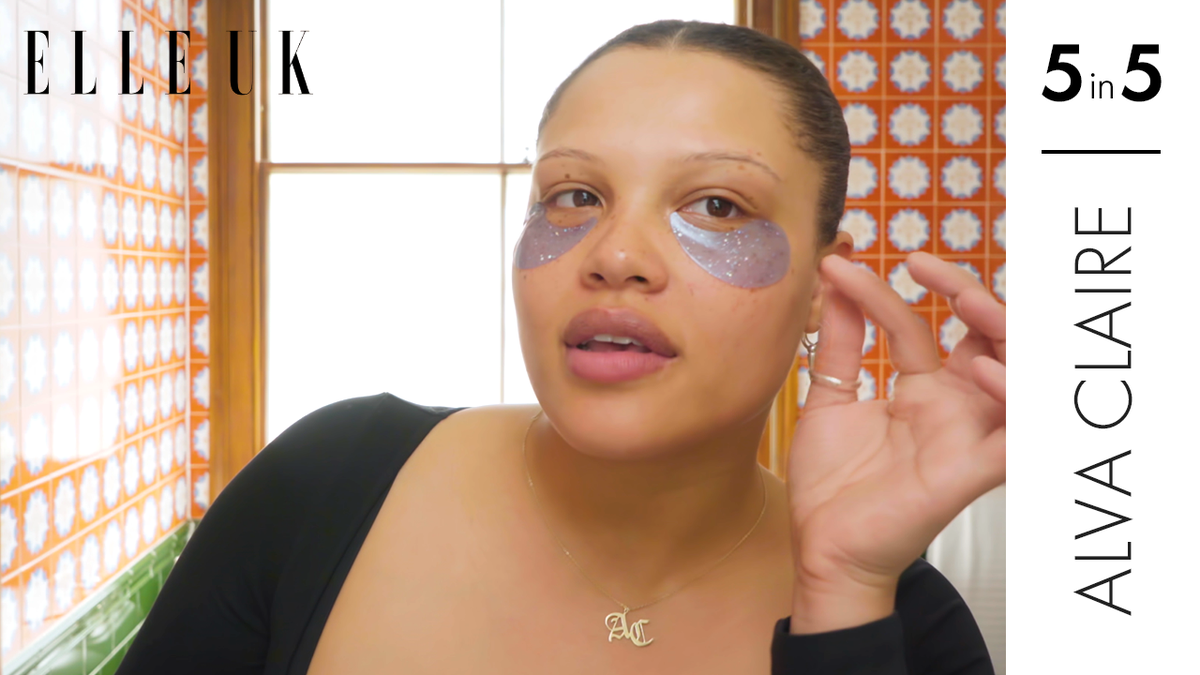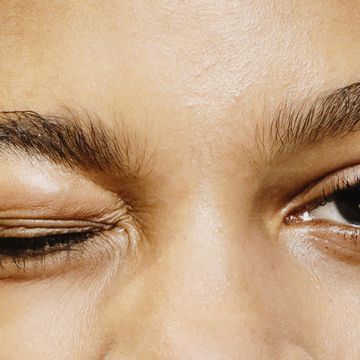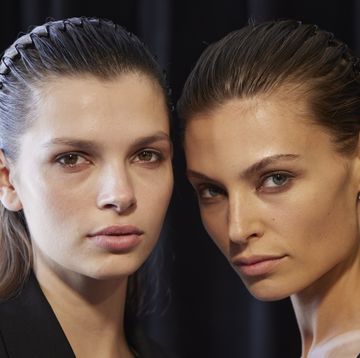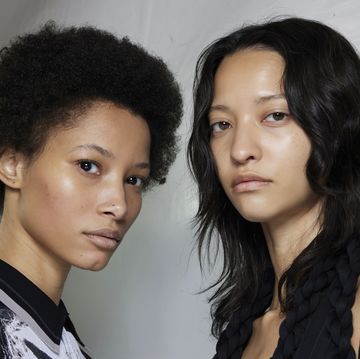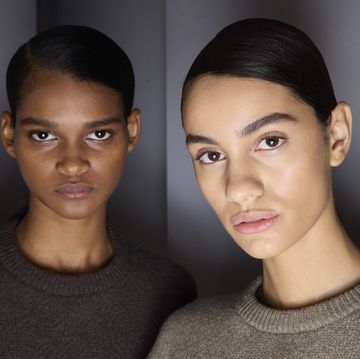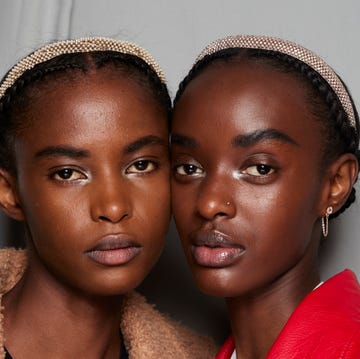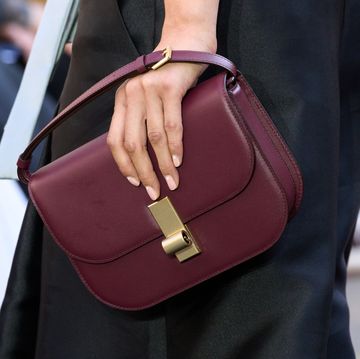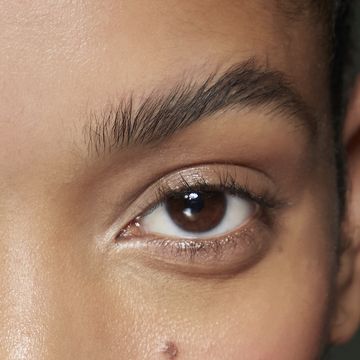Those hard, white bumps on your skin that just won't let up, no matter how hard you squeeze?
They probably aren't spots.
Often tiny but always annoying, milia can crop up anywhere under the skin, although most of us tend to mistake them for acne clusters or even skin tags.
The good news? There are simple ways to stop milia from rearing their heads and some seriously effective methods for milia removal if you're late to the game.
Ahead, a top dermatologist share the best way to treat milia once and for all.
What Is Milia?
Before you undergo some major milia removal, it pays to know exactly what they are.
Spoiler: Even though they may look similar to whiteheads, they are nothing like them.
'Milia are small white bumps or cysts that appear on the surface of the skin when dead skin cells become trapped,' explains Consultant Dermatologist at Self London Dr. Anjali Mahto.
'They are made up of keratin, a protein on the outer layer of the skin, and whilst they resemble whiteheads, they are not related to acne or infection and are simply a pocket of normal skin. They shouldn't be treated in the same way,' she adds.
What Causes Milia?
According to Dr. Anjali, milia on the face are usually formed spontaneously, and there are a number of factors that contribute.
'They are very common and can affect any age group from infancy to the elderly. But it’s likely that smothering your skin in heavy unguents contributes to their formation, hence their frequency in adult women,' Dr. Sam Bunting, founder of Dr Sam’s Skincare, adds.
'A prolonged history of sun damage is also a potential trigger – it can discourage cells from naturally exfoliating, encouraging the formation of these tiny annoying cysts.'
How Can I Get Rid Of Milia?
It goes without saying, but don't go squeezing the milia as that can cause scarring and damage the skin barrier. Instead try these methods to safely and effectively tackle the pesky spots.
1. Gentle Exfoliation
There are endless benefits to exfoliating your skin, including: minimising hyper-pigmentation, banishing blemishes and reducing superficial acne scarring - and seeing as milia are a result of trapped skin cells, exfoliation is brilliant at keeping them from springing up, too.
'[Gentle exfoliation] allows the dead skin cells to be removed, resulting in much less build up,' explains Dr. Anjali.
'It also allows for moisturiser to penetrate the skin further,' she adds, which means you'll get a hell of a lot more out of your luxury skincare arsenal.
2. Chemical Peels
Superficial peels containing AHAs and BHAs, including glycolic and salicylic acid, provide accelerated, chemical exfoliation without the need to aggressively scrub your skin.
Non-abrasive, they only lift off the top layer of skin, ensuring the skin is 'clean and fresh,' according to Dr. Anjali. And fewer dead cells = fewer unsightly bumps.
Can't make it to a professional clinic? At-home face peels are gaining traction among those on a quest for clearer, more refined skin, and with high concentrations of exfoliating ingredients like lactic and glycolic acid, the de-congesting, complexion perfecting results are pretty much undeniable. However, less is more when working with acid-infused products at home. Start with a lower concentration once a week to see how your complexion reacts, and keep the rest of your skincare routine gentle with barrier-building ceramides and hydrating ingredients.
3. Ditch Heavy Creams For Lightweight Textures
If milia tend to cluster around your eye area, it could have something to do with the texture of your skincare products. That super-luxe eye cream you just splurged on? It might be doing your skin more harm than good.
'I suggest seeking out skincare products labeled non-comedogenic,' Dr. Bunting says. 'This is especially true of products designed to stay on skin for protective reasons, like sunscreen. I also recommend taking particular care when choosing products for eye make-up removal - oily or bi-phasic eye-make-up removers tend to be more problematic.'
Applying thicker creams to thin and delicate areas of skin has the potential to both block the pores and to trap dead skin cells - cue an army of pesky under-the-skin bumps.
The solution? A lightweight eye cream formula that's quickly absorbed without blocking pores.
4. Incorporate Retinol Into Your Night-Time Routine
Retinols (vitamin A derivatives) are brilliant at kick-starting cell turnover, and less layers of dead skin results in fewer obstructions, fewer white bumps and a more even, flawless skin texture.
And although retinol has bit of a bad rap in skincare for turning complexions flaky and red, most modern, non-prescription formulas are kinder on skin. Just make sure you ease into it with a weekly application and don't use them alongside acids.
Bumps, be gone.
5. Professional Extraction
'There are many tried and tested treatments available for the removal of milia,'explains Dr. Anjali, 'however one of the most common is by using a sterile needle to create an incision in the skin, making way for careful extraction.'
But to avoid infection and scarring, don't attempt it at home without consulting a professional first.
'The treatment should be undertaken by a qualified dermatologist,' stresses Dr. Anjali. 'They will be able to recommend the best way of extracting the milia. The best type of treatment will also depend on the type of milia you have, as well as the number and location on the face.'
6. Avoid Increased Sun Exposure
This one is a given, but according to Dr. Anjali, increased sun damage and milia go hand in hand.
At the risk of sounding like a broken record, incorporating an SPF into your morning skincare routine is just as important in the winter months as it is in the summer, especially if you're using peels or exfoliators containing acids, as they can make your skin more sensitive to UV rays.
7. Book In For An Electrodessication Treatment
We know what you're thinking: Electrodessi-what?
But if you've been down the exfoliation, chemical peel and retinol route to no avail, you might want step up your game and book in for a professional treatment to get rid of your milia.
'This process uses electricity [and a fine metal electrode or probe - not as terrifying as it sounds, promise] to heat the skin and to destroy the milia,' explains Dr. Anjali - but don't worry, it's done under a local anaesthetic cream to minimise any twinges.
Crystal clear skin? Yes please.
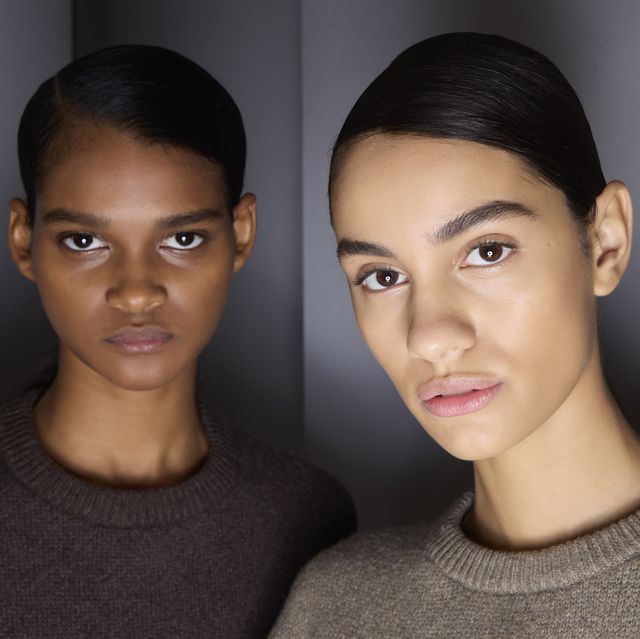













![Redermic [R] Anti-Ageing Anti-Wrinkle Eye Cream15ml Redermic [R] Anti-Ageing Anti-Wrinkle Eye Cream15ml](https://hips.hearstapps.com/vader-prod.s3.amazonaws.com/1714657713-la-roche-posay-redermic-r-retinol-eye-cream-663399ab62e04.jpg?crop=0.8xw:1xh;center,top&resize=980:*)

